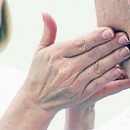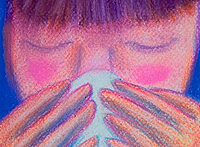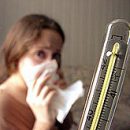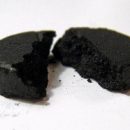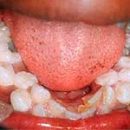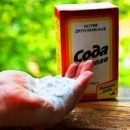The consequences of the bite of this small insect are different: paralysis, deafness, death. Not all ticks are carriers of encephalitis, but to know, the tick is infected or not, it is impossible with the help of an external inspection, so you have to fear of all.
Content
When and where the ticks bite
For a person, the most dangerous isxodic ticks that are able to transfer various diseases. Infections arising from the bite of a tick is very much, most common - tick-borne encephalitis and borreliosis. The tick lifetime is usually several years, during which time it undergoes several transformations from the larva through the nymph in an adult tick. How much time the tick lives exactly not known, but it is important that he is able to preserve the causative agents of the disease for years.
The most active ticks in the warm season, starting from the end of April-early May and ending with September-October. Therefore, going during this period of time to areas with an increased tick-hazard, in thirty-forty days before departure, it is advisable to make a vaccination from tick-borne encephalitis. Areas where the encephalitite tick is commonly called endemic on tick-borne encephalitis.
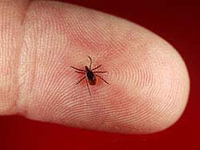 Remember that protection from the encephalitite tick in your hands. Being in the forest, you must try to avoid wet, shaded places with thick undergrowth and grass, without need not to climb into young Osiennik's young slips, in Malinniki, where ticks meet most often. Especially a lot of ticks on the side of the forest trail and roads, where they wait for their sacrifice, sitting on the hanging branches of small, to a meter of height, bushes and on grass stems.
Remember that protection from the encephalitite tick in your hands. Being in the forest, you must try to avoid wet, shaded places with thick undergrowth and grass, without need not to climb into young Osiennik's young slips, in Malinniki, where ticks meet most often. Especially a lot of ticks on the side of the forest trail and roads, where they wait for their sacrifice, sitting on the hanging branches of small, to a meter of height, bushes and on grass stems.
For safety reasons for movement, it is preferable to choose light groves without undergrings and shrubs, dry pine bors, open clearing and similar places where windy and sunny. Here ticks are small. In addition, you must remember that the most active ticks in the morning and in the evening. In the heat or during the heavy rain, the ticks are low-active, which reduces the danger of their attacks.
Considerable degree of ticks can correctly selected clothing. Best of all, if the outerwear is made of Bologna and similar smooth fabrics, on which the mesh hold more complicated than on rough. Top jacket, shirt or T-shirt must be filled in pants under gum or belt.
Shirts and pants with a withering better to move the pile inside so that the magazine was harder to cling on the material. As experience shows, a huge amount of ticks can be accumulated in the dies tissues. Low shutter — The most likely way of penetrating ticks on the body. Cuffs Pantian need to pull to ankle with gum, pieces of rope, grass stem or fill in socks. In general, it is better to travel in high boots in high boots. Goaling sleeves should also be fastened and pull on the wrists or shove under gum gloves. Head to protect the hood, and it is better to wear a tightly adjacent hat, because in the hair to find the tick there is extremely difficult.
At
The presence of repellent ointments should be missed by cuffs, collar and others
holes and slots in the material through which the tick can penetrate under
Clothes.
When the tick penetrates under clothes, it is not
bites immediately, and for some time moving around the body, in search of
convenient place. If you are attentive enough and listen to
yourself, then crawling on the skin tick can be felt and deleted on time.
Every two or three hours it is desirable to inspect the open areas and twice a day on a large prival and in the evening to conduct a thorough inspection of clothes and bodies. It should be remembered that it is impossible to remove ticks from the fabric by simply shaking. In places of mass accumulation of ticks, inspection has to be carried out almost every half hour.
If bitten the tick
Tick bite is almost impaired: the insect introduces an anesthetic in the wound. Therefore, the tick is found, as a rule, not immediately. Most often, the tick is dug into the armpits, in the neck, the skin behind the ears, groin, but it can be in any other place
The tick of the tick can not be tricious or sharply pulling out. It will only increase the likelihood of Encephalitis infection!
In no case do not pour ticks with oil, fat or kerosene! As soon as the tick stops getting air, it starts «sick» And all the contents from the digestive system splashes out to the outside together with the viruses of the tick-borne encephalitis and the pathogens of Burreliosis. Ticks must be captured by tweezers or fingers wrapped marks, and remove slow, smooth movements from the skin, so that the proboscis. If the trumps still crumbled, it should be removed using a needle. The wound from the tick bite is better to handle iodine or alcohol.
IN
another case the head tick in the place of contact with the skin
Reinforced a native loop. The ends of the thread are stretched to the sides, and
Gradually loop pulls the skin tick. Video with tick removal technique can be found here.
Sometimes
After pouring the tick with oil or kerosene, it is permissible to pose it under
proboscis needle and slowly squeezing, stretch out.
After removing the hand and the place of bite it is necessary to disinfect, as it is possible to infect encephalitis through the gastrointestinal tract, when food is taken by dirty hands. Do not be unprocessed hand to touch the eyes and mucosa of the mouth and nose.
Dangerous bite tick during pregnancy, t.To. Misunderstanding diseases may damage the fetus. Therefore, after removing a tick, a woman must be consulted in a doctor.
For emergency prevention of tick-borne encephalitis, if you cannot use antiquity immunoglobulin (the presence of contraindications, more than 96 hours have passed after the tick bite), doctors recommend the anaferon anti-fleeon. The drug increases the formation of interferon in the body and is allowed to use in children from 1 month. Anaferon is recommended to apply after a tick bite for 21 days. The drug can be appointed in a later dates (later than 96 hours from the moment of bite), but preferably earlier use. In addition, Anaferon can be prescribed and in parallel with the use of anti-anti-immunoglobulin.


